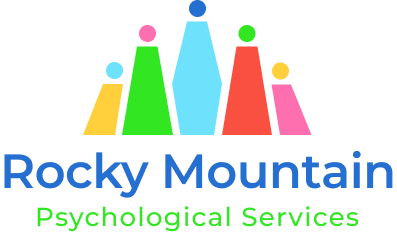Over the years, I have seen many families walk into my office feeling disconnected, frustrated, or overwhelmed by patterns they cannot seem to change. Whether it is conflict between parents and teens, communication breakdowns, or the emotional impact of a major life event like divorce or death, one truth always stands out: no one struggles in isolation. When one member of the family is hurting, the entire family system feels it.
This is where Family Therapy comes in. It is a collaborative process that helps families understand one another, repair strained relationships, and develop healthier strategies to interact. In this post, we will explore what family therapy is, the key approaches and models that guide it, and what families can expect when they begin this process.
Understanding Family Therapy
Family Therapy, also known as family systems therapy, is a type of psychotherapy designed to improve relationships and resolve conflicts within a family unit. It does not focus on one person as “the problem.” Instead, it views the family as an interconnected system in which each member’s thoughts, emotions, and behaviors influence the others.
Family therapy is based on the idea that change is most effective when it involves the entire system rather than just an individual. It can include all family members or just those most directly involved in the issue. Sessions can take place with parents and children, couples, siblings, or extended relatives, depending on the situation.
Family therapy is particularly helpful for families experiencing:
- Frequent conflict or poor communication
- Parenting challenges or co-parenting struggles
- Adjusting to major transitions such as divorce or blending families
- Grief, trauma, or loss
- Substance use or mental health concerns affecting one or more family members
- Behavioral or emotional challenges in children or teens
The ultimate goal of family therapy is to create understanding, improve communication, and foster a supportive environment where each person feels seen, heard, and valued.
The Foundation: Systems Thinking
At the heart of family therapy lies systems theory, first developed by psychiatrist Murray Bowen. This theory views the family as a living system in which each member’s behavior both influences and is influenced by others.
Think of it as a mobile hanging from the ceiling. When you tap one part, the entire structure moves. Similarly, if one person’s stress or behavior changes, the rest of the family adjusts in response. Family therapy helps identify these invisible patterns, giving families the tools to make intentional, healthy changes rather than reactive ones.
Common Approaches and Models in Family Therapy
Family therapy is not a one-size-fits-all process. Over time, several influential models have been developed, each offering a unique perspective and set of techniques. Most therapists blend elements from different approaches based on the family’s needs.
1. Structural Family Therapy (Salvador Minuchin)
This model focuses on how the family is organized — its hierarchy, boundaries, and roles. Problems often arise when these boundaries are too rigid or too loose. For example, a parent who acts more like a friend than a caregiver, or a child who feels responsible for mediating parental conflict. The therapist works to realign the structure, strengthen leadership roles, and clarify relationships so that balance and respect are restored.
2. Strategic Family Therapy (Jay Haley and Cloe Madanes)
This approach looks at communication patterns and the strategies families use to solve problems, even when those strategies unintentionally maintain the issue. The therapist may assign specific tasks or “homework” designed to interrupt negative cycles and encourage new, more constructive behaviors.
3. Bowenian Family Therapy (Murray Bowen)
Bowen’s model emphasizes emotional interdependence and the concept of differentiation, which is the ability to maintain a sense of self while staying emotionally connected to others. A Bowenian therapist helps family members manage anxiety, reduce emotional reactivity, and communicate from a place of calm and clarity rather than impulse.
4. Narrative Family Therapy (Michael White and David Epston)
Narrative therapy is based on the idea that families and individuals create stories about their lives. Sometimes these stories become narrow or negative, shaping how people see themselves and one another. The therapist helps the family “re-author” their story by identifying strengths, shared values, and alternative perspectives.
5. Solution-Focused Brief Therapy (Steve de Shazer and Insoo Kim Berg)
This model emphasizes what is working rather than what is broken. Families are guided to identify small, achievable steps that move them toward their preferred future. It is a practical, strengths-based approach often used when families need focused, short-term support.
6. Emotionally Focused Family Therapy (Sue Johnson and Les Greenberg)
Grounded in attachment theory, this approach focuses on rebuilding emotional bonds and secure attachment between family members. The therapist helps uncover underlying emotions that drive conflict, allowing family members to reconnect with empathy and understanding.
Each of these models offers valuable insight. The therapist’s job is to adapt their approach so that it fits the unique personality, culture, and goals of the family they are supporting.
Core Techniques Used in Family Therapy
While techniques vary depending on the therapist’s orientation, most family therapy sessions share a few common tools and strategies:
- Active Listening and Reflective Dialogue: Family members practice listening without interrupting and restating what they heard to build empathy and clarity.
- Role-Playing and Communication Exercises: These help families experience interactions from another’s perspective and learn new ways to express needs and emotions.
- Boundary Setting: Therapists help clarify healthy boundaries so that each member’s responsibilities and limits are respected.
- Reframing and Perspective Shifting: The therapist helps the family view problems in a new light, transforming blame into understanding.
- Emotion Coaching: Members learn how to identify and respond to feelings constructively rather than reactively.
- Behavioral Assignments: Families might be given small tasks to practice between sessions, such as having a calm discussion at dinner or sharing one appreciation per day.
These techniques aim to turn insight into action and strengthen the family’s ability to manage conflict, express emotions, and support one another.
What to Expect in Family Therapy Sessions
The first few sessions are usually about assessment and understanding. The therapist will gather background information, listen to each member’s perspective, and observe the family’s interaction patterns. The goal is not to find a “villain” but to understand the dynamics that keep problems in place.
After the initial sessions, the therapist and family collaborate to set clear goals. These goals might include improving communication, reducing conflict, supporting a specific family member, or navigating a transition such as divorce or grief.
A typical session lasts 50 to 90 minutes. During the session, the therapist might:
- Facilitate structured conversations so everyone feels heard
- Teach communication or problem-solving skills
- Highlight recurring patterns, such as blame or withdrawal
- Encourage reflection and empathy between family members
- Assign practice exercises to try at home
Family therapy is generally short-term, lasting anywhere from 6 to 20 sessions, although some families continue longer for maintenance or deeper work. Progress depends on the family’s willingness to be open, honest, and actively engaged in the process.
Families often find that while therapy may feel uncomfortable at first, it gradually becomes a safe space where real connection can happen. Many describe feeling more understood and emotionally closer, even after a few sessions.
The Benefits of Family Therapy
Family therapy offers both immediate and long-term benefits. These may include:
- Improved communication and emotional expression
- Healthier boundaries and clearer roles within the family
- Reduced conflict and greater emotional understanding
- Stronger support for individual members’ mental health
- Greater family resilience during stress, loss, or change
Over time, these improvements often ripple out beyond the home. Teens may perform better in school, parents may feel more united in decision-making, and the overall emotional climate of the family becomes calmer and more connected.
Closing Note
Every family faces challenges, but those challenges do not have to define the future. Family Therapy helps families move from patterns of blame and misunderstanding to ones of empathy, respect, and growth.
At Rocky Mountain Psychological Services, we believe healing happens together. Through guided conversations, evidence-based techniques, and renewed understanding, families learn that healing happens not in isolation but together. When communication improves and emotions are acknowledged safely, connection naturally follows.
If your family is struggling with conflict, distance, or change, reaching out for Family Therapy can be the first step toward rebuilding harmony at home. Support is available across Canada through private clinics, community mental health centres, and online therapy platforms. The path to a healthier family dynamic often begins with a single conversation — one grounded in care, courage, and the willingness to listen.
References:
Carr, A. (2019). Family therapy and systemic interventions for child‐focused problems: The current evidence base. Family Process, 58(3), 558–578.
Szapocznik, J., Hervis, O., & Schwartz, S. (2012). Brief Strategic Family Therapy for adolescent behavior problems. Journal of Marital and Family Therapy, 38(3), 1–13.
Wiebe, S. A., & Johnson, S. M. (2016). A review of the research in Emotionally Focused Therapy for families: From individual distress to relationship repair. Family Process, 55(4), 673–688.


